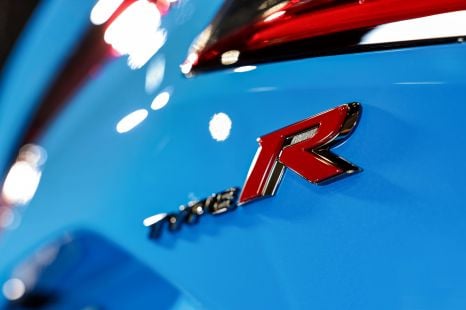

Damion Smy
Honda Prelude Type R ruled out... for now
18 Minutes Ago
Take a walk down on the wild side with this stunning Alfa Romeo racer for the road, arguably the most beautiful car in the world.

Design Contributor


Design Contributor
You can’t be an automotive enthusiast and not get excited about how cars looked in the 1960s. It was the renaissance of the automotive design, when real artists created sculptures on four wheels that still don’t look out of place in a museum.
And while there were plenty of stunning cars launched during the ‘60s, there’s one that stands out from the crowd. It’s a perfect starting point for the Design Review series at CarExpert
Ladies and gentlemen, may I present you the most beautiful car ever created: the Alfa Romeo 33 Stradale.
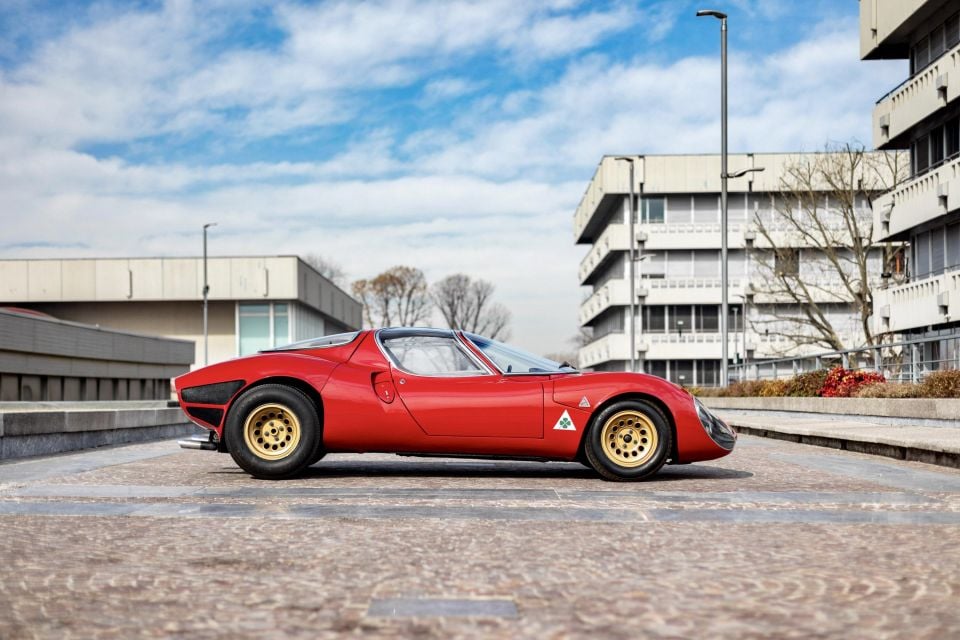

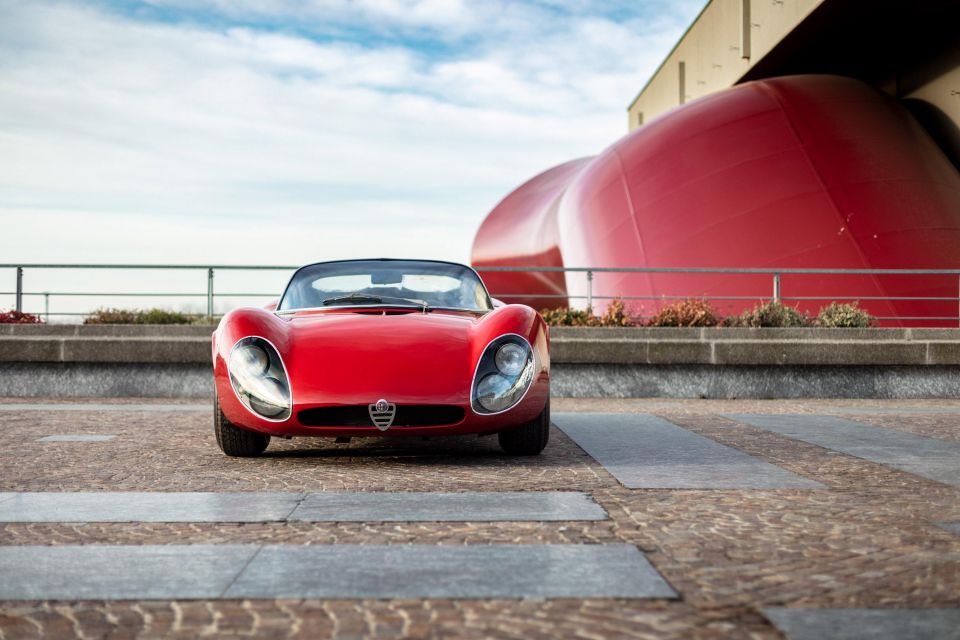
The 33 Stradale was the road-going version of the Alfa Romeo Tipo 33 series of racecars, and is considered one of the first supercars. It was launched on August 31, 1967, right before the start of the Italian Grand Prix at the Autodromo Nazionale Monza, and officially premiered a few weeks later at the 49th Salone dell’Automobile in Turin.
As a homologation special the 33 Stradale was based on an H-shaped aluminum alloy tubular chassis with double wishbone suspension and a mid-mounted naturally-aspirated engine made from aluminium and magnesium.
The twin overhead camshaft dry-sump 2.0-litre V8 was designed by Giussepe Busso and assembled by Autodelta. It was slightly less powerful than the racing unit, producing 169kW of power and 206Nm of torque, and was mated to a six-speed manual transmission built by Colotti Transmission in Modena, sending power to the rear axle.
Thanks to the extremely low kerb weight of around 700kg, the 33 Stradale could accelerate from 0-100km/h in less than six seconds, while top speed exceeded 260km/h. Thus, it was one of the fastest production cars of its time with equally impressive driving dynamics.

The man responsible for the aluminum body of this race-bred machine was the Italian designer Franco Scaglione (1916-1993).
Born in Florence, Scaglione is one of the great masters of car design. After surviving WWII, he combined his background in Aeronautical Engineering with his experience as a fashion stylist, dedicating himself to what he loved most – automotive design.
Between 1951 and 1959 Scaglione worked for Bertone, before continuing as a freelance designer.
Among the beautiful cars he designed are the Alfa Romeo B.A.T. prototypes (1953-1955), Giulietta Sprint (1954), and Giulietta Sprint Speciale (1957), the Maserati Birdcage tipo 64 (1962), Lamborghini 350 GTV coupé (1963), and of course the Alfa Romeo 33 Stradale (1967) which is considered the pinnacle of his career.
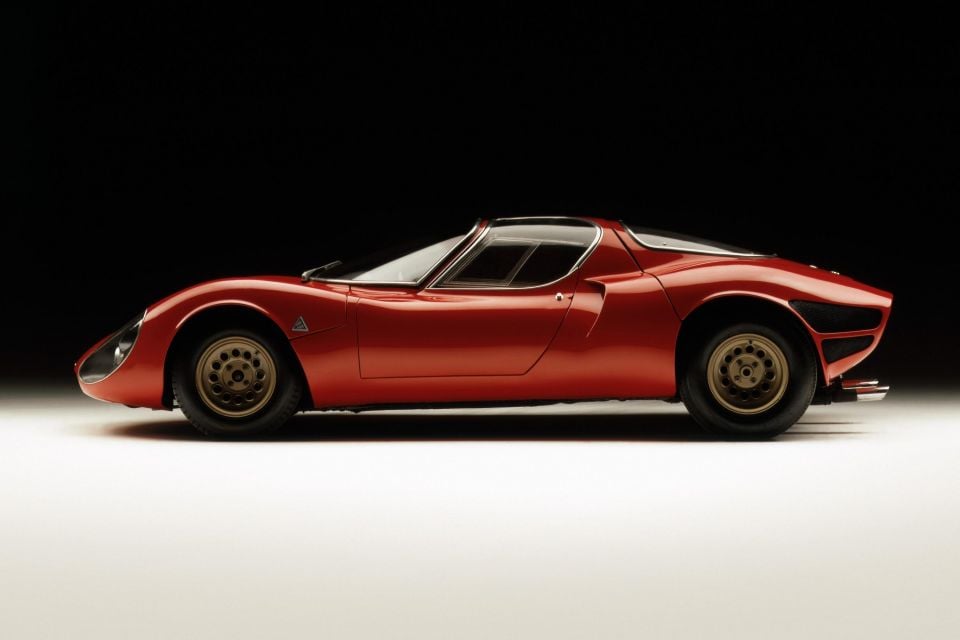
So why is this thing so attractive to the eye? The answer lies on the sexy curves of its petite body, the balanced mid-engined proportions, the aeronautical-inspired greenhouse, and the dramatic design details.
The body of the 33 Stradale has a harmony that only nature can create. Everything was purposefully designed to support the character of its underpinnings, creating the ideal marriage between form and function.
At the front, the large oval-shaped headlights were the eyes of the car, creating a dramatic look. They incorporated two circular units and a smaller indicator in black background surrounded by a thin strip of chrome.
Despite their sheer size, the headlights were beautifully integrated on the rounded front fenders (somewhat similar to the Ferrari 330 P3, 412 P and 330 P4) which sat considerably higher than the bonnet, resembling what we would call a deep décolleté.

The low nose featured a single air intake between the headlights, where we would normally find a bumper, with a rather small chromed scudetto grille revealing the proud ancestry of the car.
If you look closely, you will notice that the prototype has some flaws – the headlights and grille are not 100 per cent symmetrical, the wheel arches don’t follow the exact outline of the wheels etc.
Consider them healthy reminders of the hand-built nature of this sculpture. Instead of messing up with the cohesion, they make it look even more human-like and attractive for our brain.
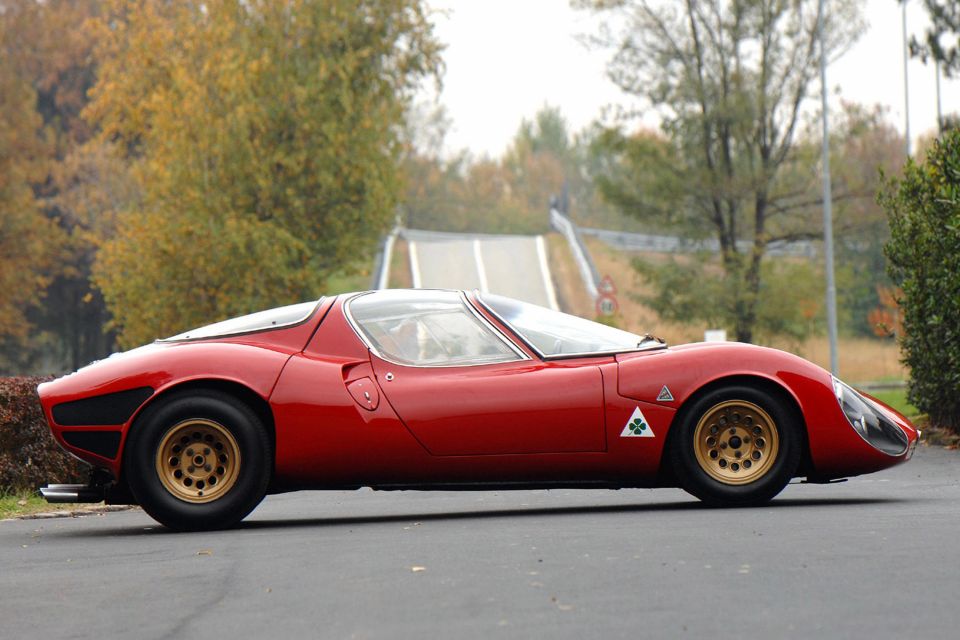
The phone-dial wheels made from magnesium were only 13 inches in diameter – far from the 21-inch standard of 2020 – but the height of just 991mm in combination with the bulging fenders made them look just the right size for a street-legal race car.
Besides the overall shape, a signature design element of the 33 Stradale was the butterfly doors with curved glass that opened upwards and integrated a part of the roof. This was the first time they were used in a production vehicle and besides the exotic looks, they were there to allow an adult to sneak into the two-seater cabin without the help of a chiropractor.
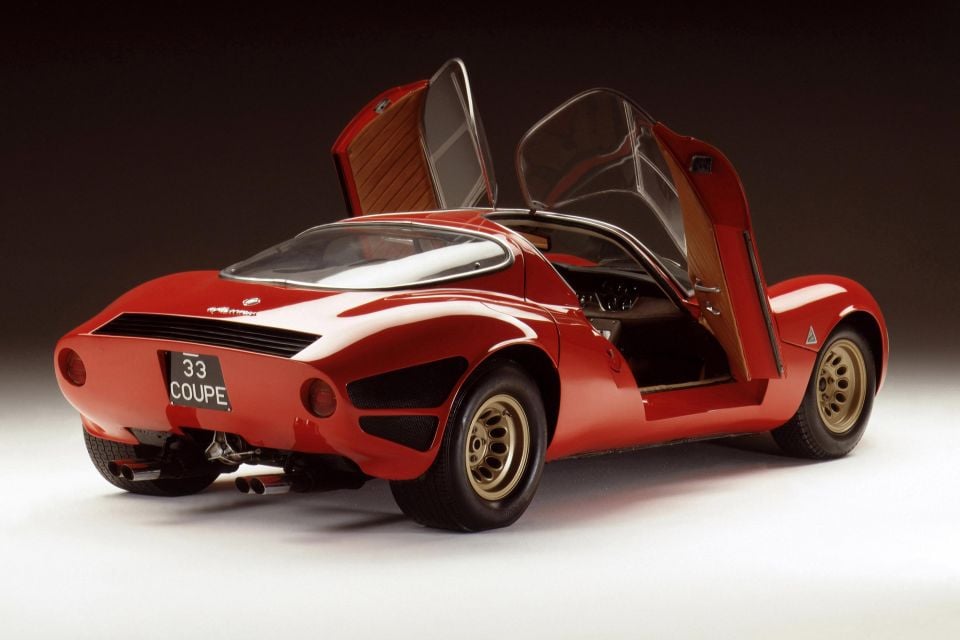
The greenhouse was quite large for the car’s size. The roofline consisted of a single arch starting from the panoramic front windscreen and reaching the tail.
The window line dropped towards the middle following the curves of the front fenders whilst creating a slim waist for this diva. Then it was raised parallel to the A-pillars, creating a triangular C-pillar and hugging the glass roof panels with beautifully curved lines.
The C-shaped side intakes were positioned right behind the doors on the edge of the wider rear fenders, creating an offset to the curved profile and providing air for cooling the mid-mounted engine. The panel gap for the rear clamshell was parallel to the lines of those intakes, complimenting the curves of the body.
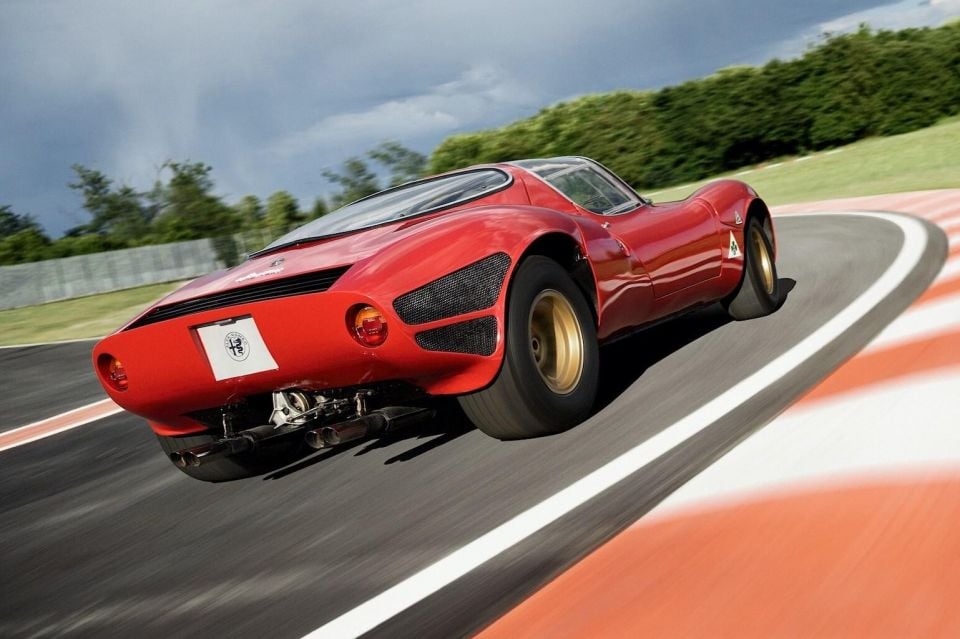
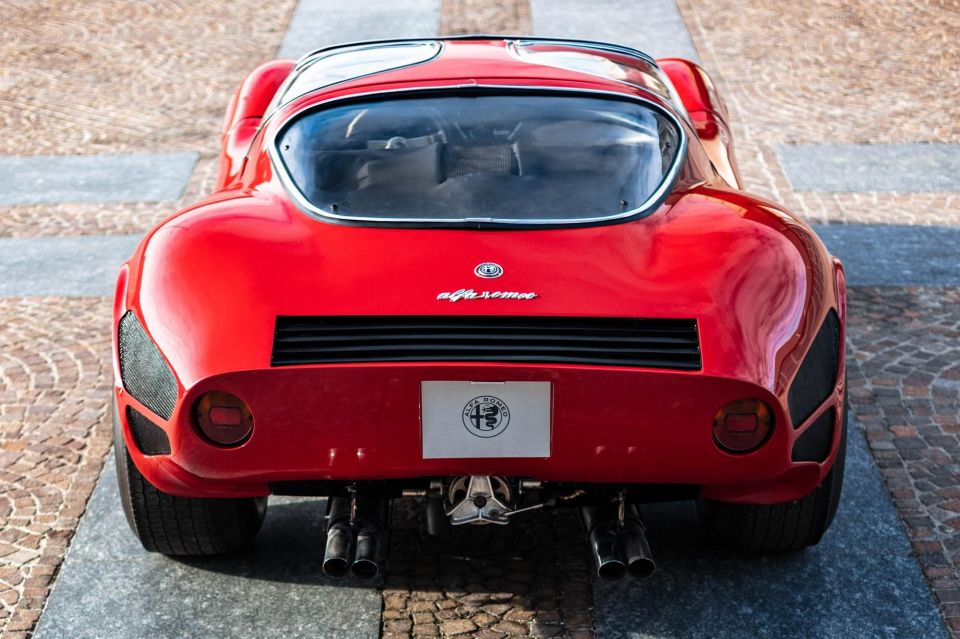
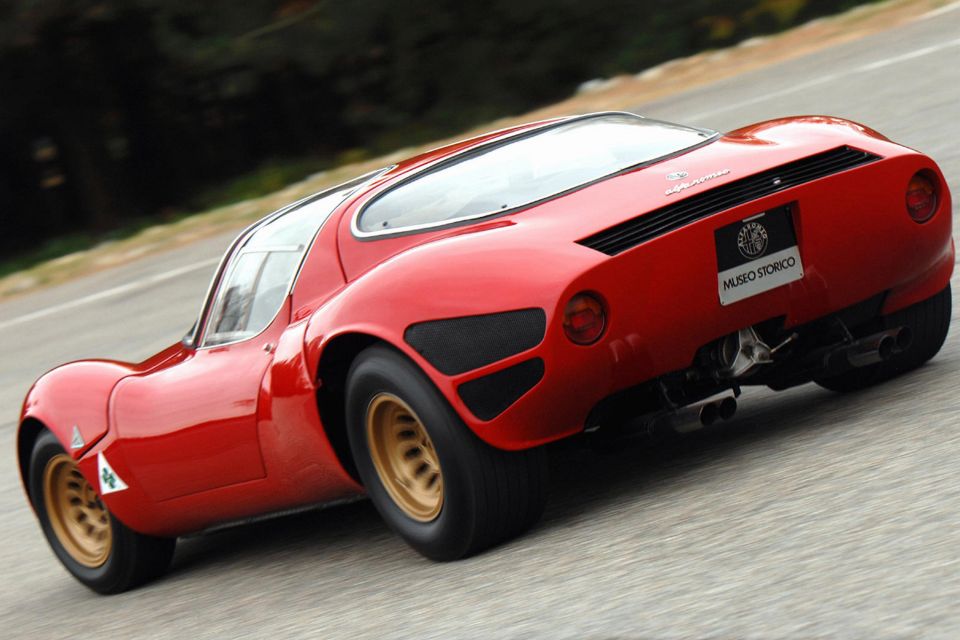
At the back, the heavily-inclined rear windscreen worked as a glass cover for the engine. The dropping rear deck followed the shape of the roofline and integrated a rectangular vent.
Speaking of vents, the double graphics on the rear fender made it look lighter while visually reducing the length of the rear overhang. Next to them, the bulging fenders were cut-off at a negative angle creating a flat tail with round tail lights.
Last but not least, the quadruple tailpipes sticking out of the rear and exposed mechanical components at the lower part of the tail – where we would normally see a diffuser in modern vehicles – gave the car a purposeful look right out of the racetrack.
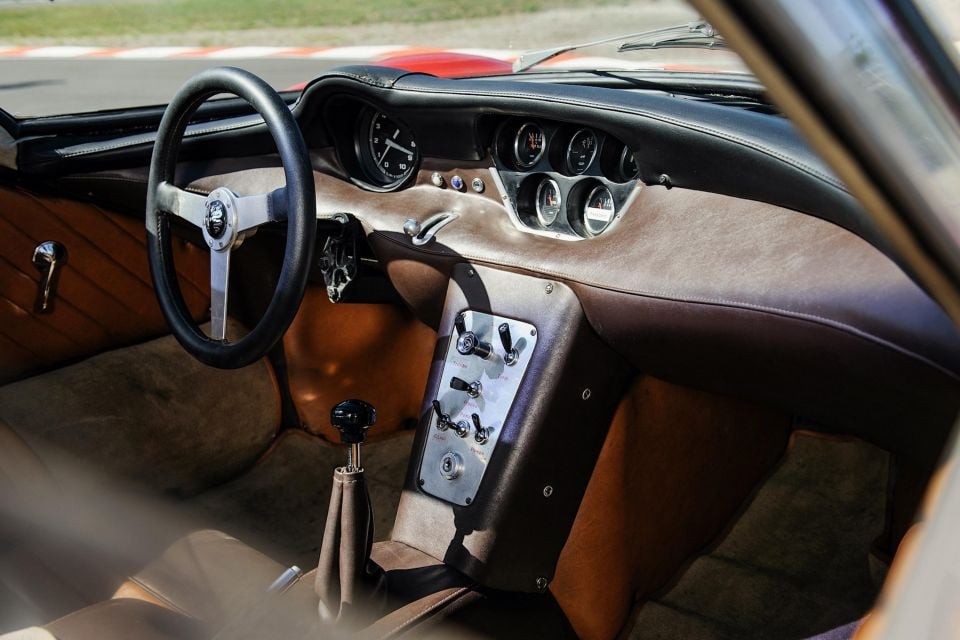
Inside, the two-seater cabin was luxurious, civilised, and comfortable for the spartan standards of a race-based low-volume production supercar. The two-piece dashboard, seats, and central console were upholstered in black and brown leather, and we also found touches of metal trim on the centre console and three-spoke steering wheel.
The tachometer was the only instrument in front of the driver, as the rest of the gauges sat in the middle. The seven switches on the centre console were controls for the wipers, the lights, and the turn signals, while there was also a key insert. The leather-wrapped central tunnel housed the manual gearbox shifter and the handbrake lever.
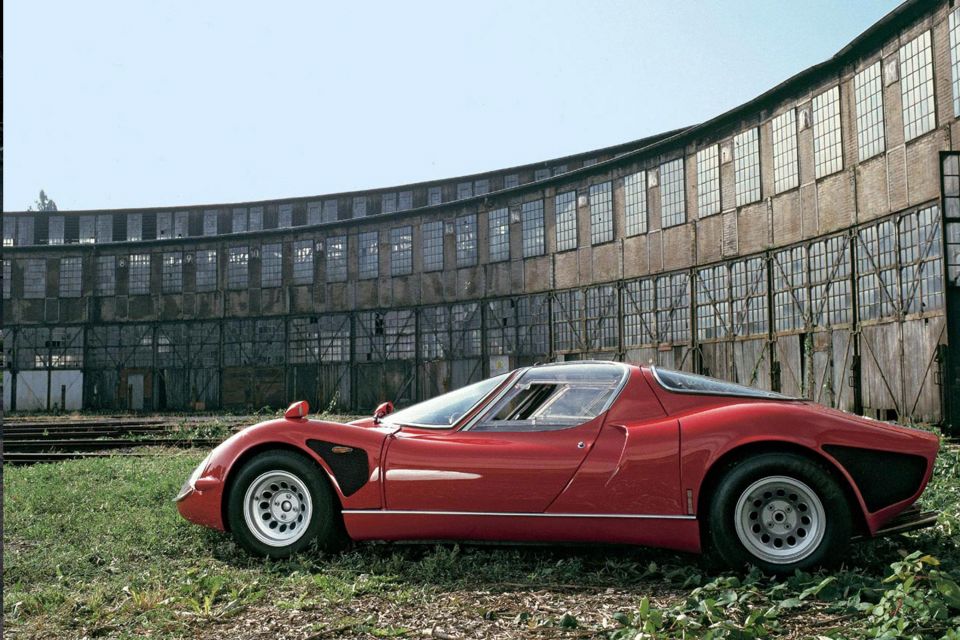
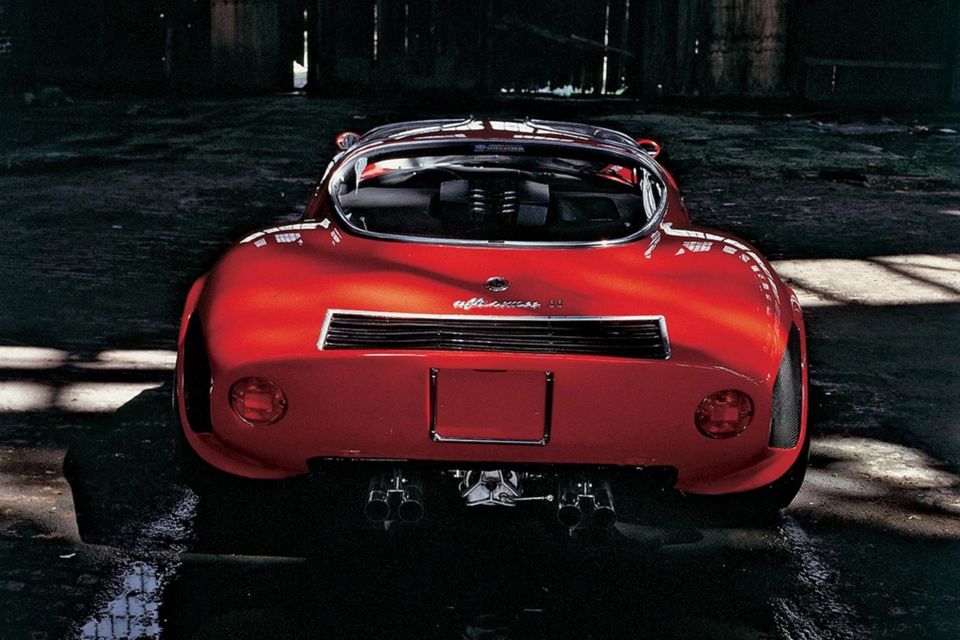

As you can see from the pictures above, the production version of the 33 Stradale that came after the development prototypes had a few differences in its design, most notably at the front end. Those were necessary for the car to comply with the regulations and become street legal.
The first thing someone notices is the smaller, single-unit headlights positioned a little higher, featuring additional warning lights on the sides.
The scudetto grew larger and the grille had more chrome. Other differences included the fender-mounted mirrors, the larger bonnet intake, the dual windscreen wipers and the horizontal chrome strip above the side sills.
Customer 33 Stradales also had additional vents in the profile behind the front wheels, and larger single vents behind the rear wheels allowing the air to escape from the wheel arches.
Inside, the production car featured a different layout for the dashboard and central console, with additional circular gauges and more extensive use of metal trim.
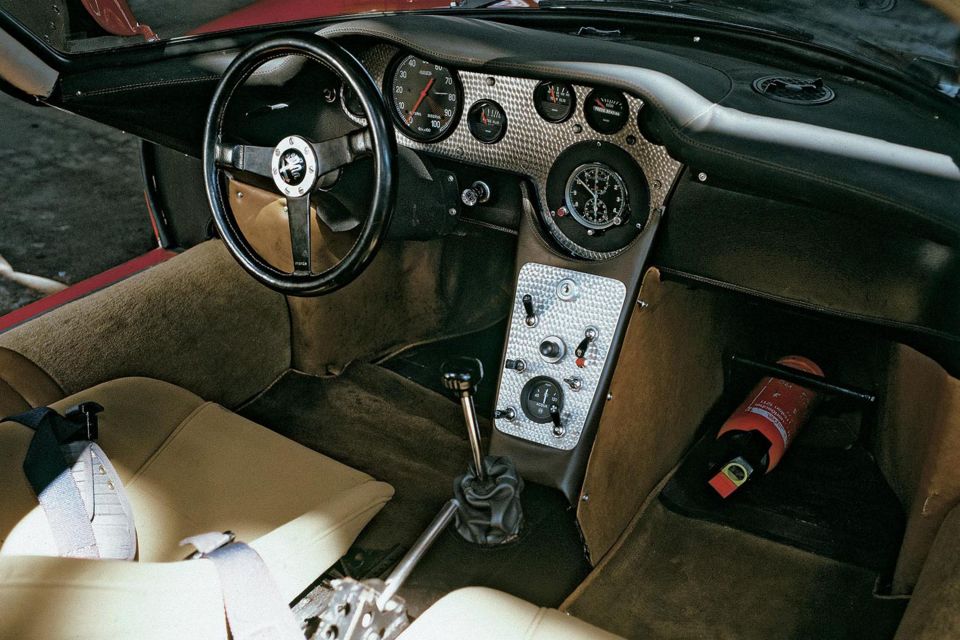
What happened next?
The Alfa Romeo 33 Stradale got an extremely high price tag due to high production costs, cutting-edge racing technology, and the aluminium body that was hand-built by Carrozzeria Marazzi.
Back in 1967, it cost US$17,000 which is the equivalent of over US$130,000 in 2020 money. It was the most expensive car on sale in Italy, surpassing the likes of Porsche 911, Jaguar E-Type, Ferrari 330 GTC, and Lamborghini Miura.
From the 50 units initially planned for production, Alfa Romeo finished a total of 18 chassis for the 33 Stradale between 1967 and 1969.
Among the cars that are believed to have existed are two pre-production prototypes, between eight and 13 production cars (no one can confirm the number), and six prototypes styled by the most famous Italian design houses. If you are wondering why the numbers don’t add up, it’s because some of the chassis were used more than once.
A few 33 Stradales ended up in private hands, and Alfa Romeo kept the original prototype which is now exhibited in the Museo Storico Alfa Romeo in Arese. Since its debut, not many cars have changed hands but the current value of a pristine example is estimated to be around US$10-15 million.
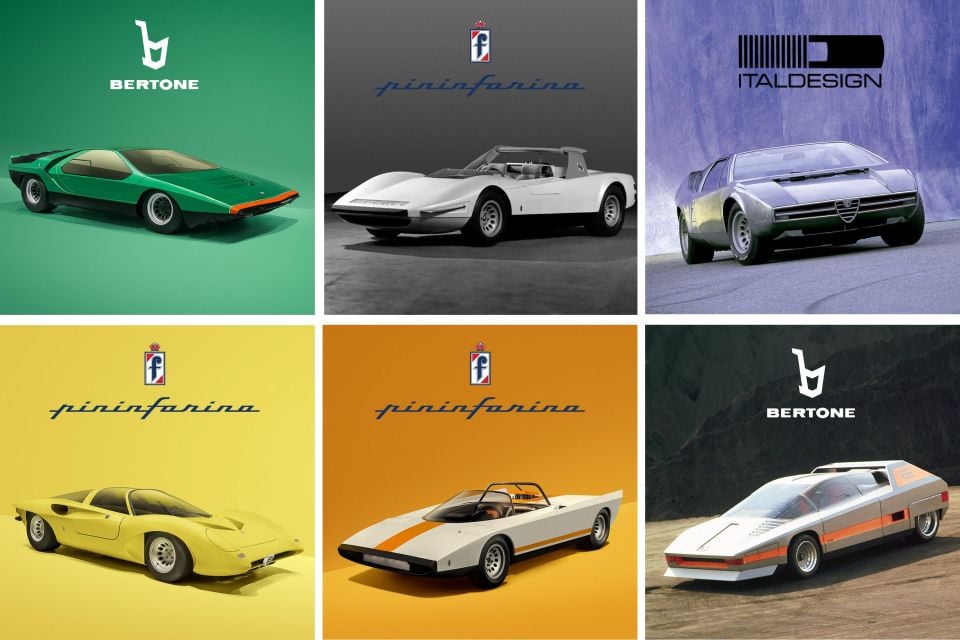
As for the concept cars, using the 33 Stradale’s leftover chassis Bertone designed the Carabo (1968), followed by Pininfarina’s P33 Roadster (1968), Italdesign’s Iguana (1969), Pininfarina’s 33/2 Coupé Speciale (1969), P33 Cuneo (1971) and Bertone’s Navajo (1976).
All of them were running prototypes wearing the Alfa Romeo badge, but none reached production status.
The legacy of the Alfa Romeo 33 Stradale didn’t go unnoticed, as many exotic supercars that followed have been inspired by its design
The rounded fenders, oval headlights, low-positioned grille, clamshell front and rear, high-mounted side air-intakes, butterfly doors with integrated glass roof-panels, and negative angled tail with exposed mechanical parts are a few of the design elements we have seen spread.

During the 2000s, Alfa Romeo created a new design language borrowing many elements from the 33 Stradale among other beautiful cars of its past.
The new identity was introduced by the 8C Competizione launched in prototype form in 2003, with the production version following in 2007. The 8C was penned by the Centro Stile Alfa Romeo which at the time was headed by Wolfgang Egger.
In order to get a better understanding of the 33 Stradale’s size (3970mm x 1710 mm x 991mm), check out the picture above where it sits next to the modern Alfa Romeo 8C Competizione.
Styling elements of the halo model were gradually incorporated in the whole Alfa Romeo range, including the MiTo (2008-2018) and Giulietta (2010-2020) hatchbacks.
The last cars with this design language were the 4C Coupé (2013-2020) and Spider (2015-2020) which, thanks to their lightweight nature and mid-engined layout, were the closest thing to the spirit of the original.
In 2020, Alfa Romeo launched the 4C Spider 33 Stradale Tributo, a limited swansong of its sports car as a tribute to its original source of inspiration.
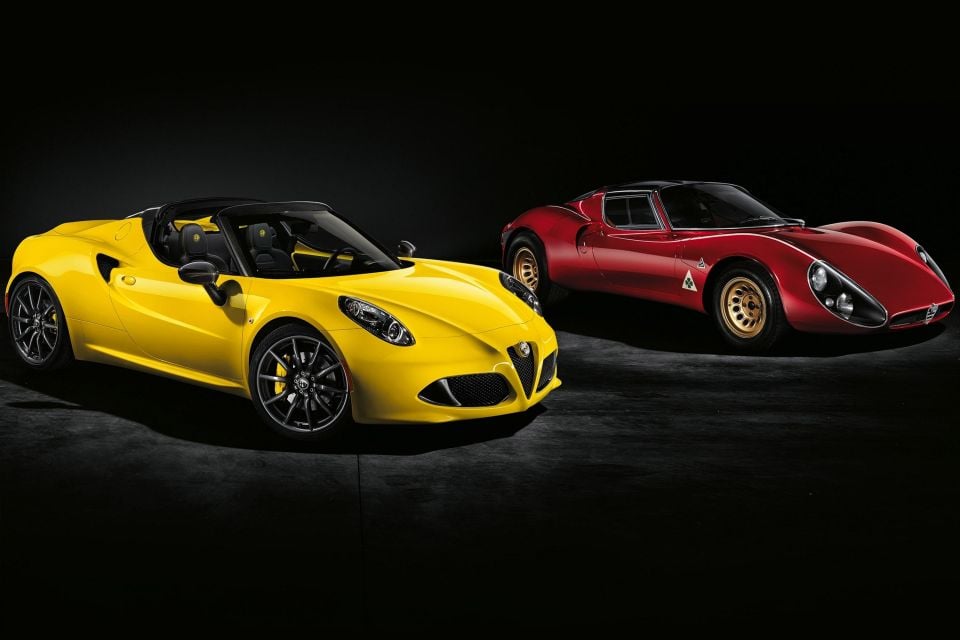
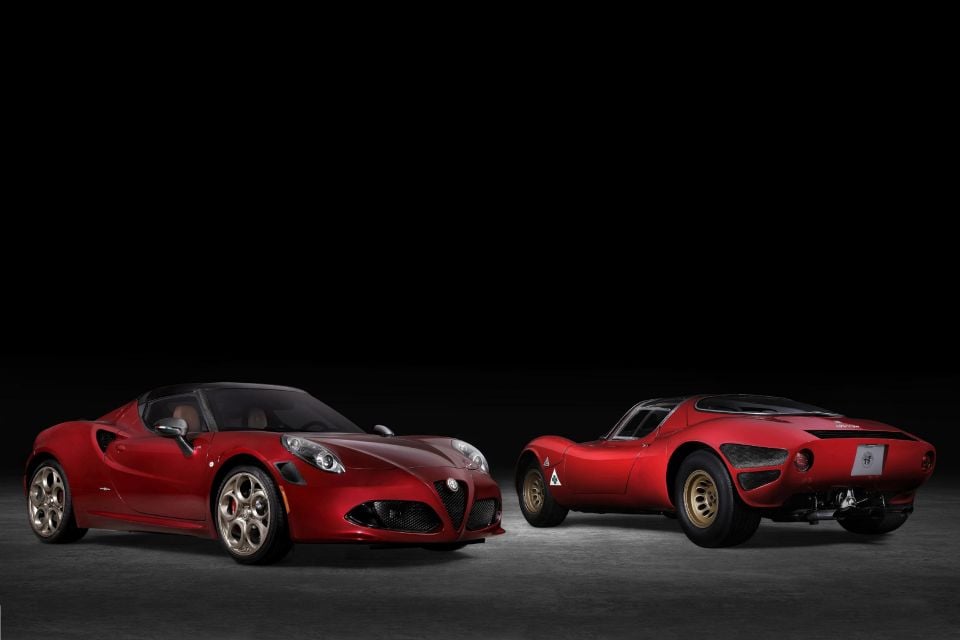
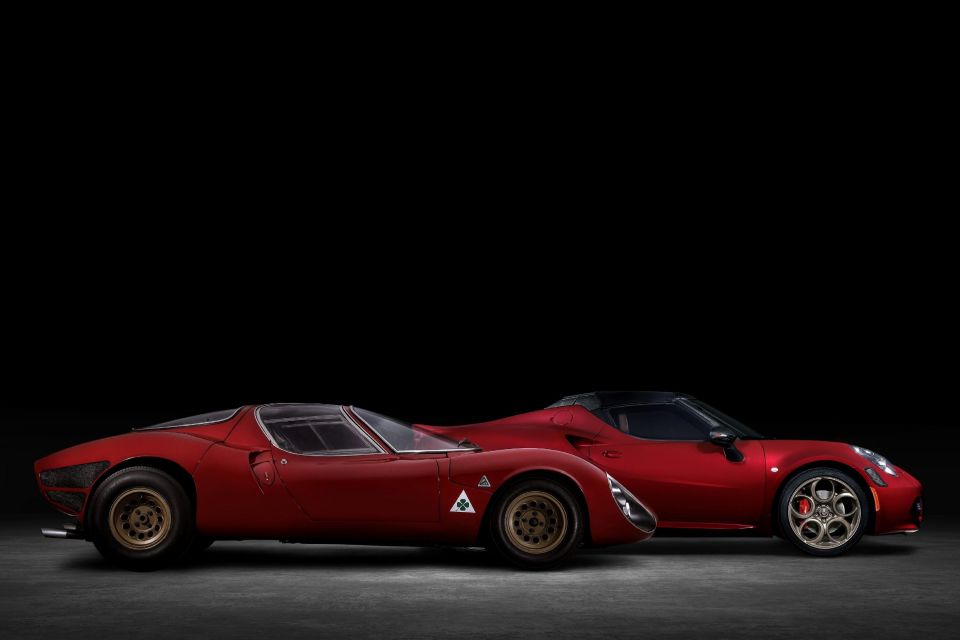
There is really not much to say about the Alfa Romeo 33 Stradale. This car is a true testament to the golden era of automotive design and its sheer beauty likely won’t be replicated in the future due to the increasingly strict regulations.
Its curvy shape with balanced proportions has a sexiness that can only be matched by a human body. This car looks like it contains a soul and to an extent it does – the souls of its creators.
Most importantly, the styling does justice to its race-bred underpinnings, true to the narrative of form follows function.
The legacy of the 33 Stradale proved important not only in future models of Alfa Romeo, but for the automotive world in general. It is the definition of a desirable exotic supercar with technology derived from the track and styling from another planet.
Thankfully, the original prototype remains in pristine condition and is accessible to enthusiasts from all over the world as the most sought after exhibit of the Museo Storico Alfa Romeo in Arese.
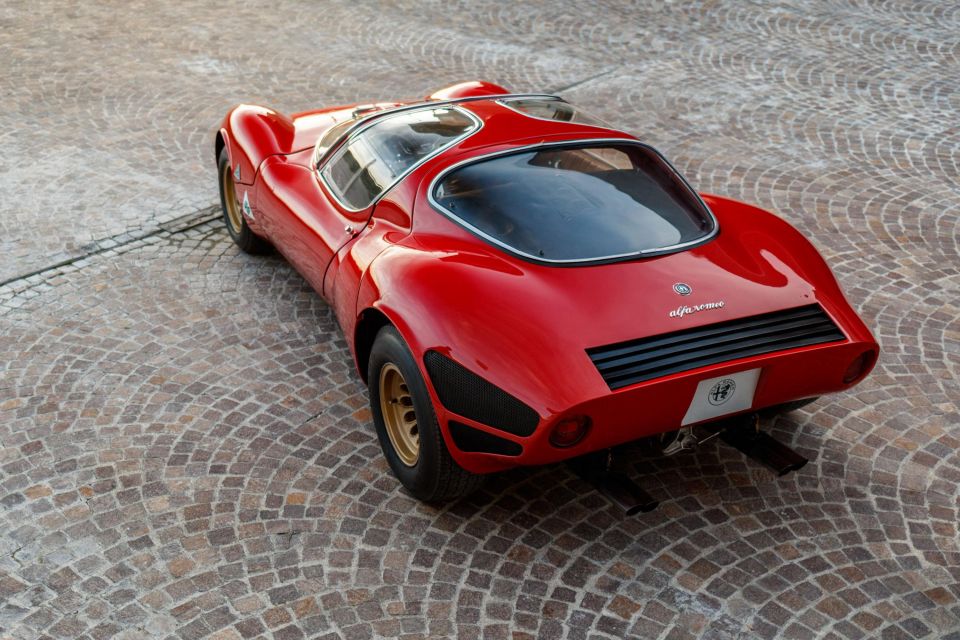


Damion Smy
18 Minutes Ago


Damion Smy
3 Hours Ago


Damion Smy
4 Hours Ago


Matt Robinson
7 Hours Ago


Damion Smy
7 Hours Ago


Damion Smy
21 Hours Ago